HELLO + WELCOME as we make our way from Sydney to London, overland through Africa.
It’s Kirsty here.
![]()
Lalibela was a mystery to us both. Home to one of the most significant religious sites in the world we weren’t sure what to expect. What we found sent tingles up the spine. We found an area where eleven medieval churches were carved underground in the 12th century out of rock, with roofs at ground level. The scale and design of which were stunning.
To get there we ‘decided’ to take a 4WD track that wound through tiny villages… with children fainting at the sight of a Farange (white person). And by ‘decided’ I mean, I clearly didn’t put two and two together well enough and took us along a 5-hour village track instead of the 3-our graded pass. Whoops.
The environment surrounding the rock hewn churches was a complete surprise to us. We didn’t really know what to expect, but we had both envisaged a flat landscape. It was, in fact, the complete opposite of that. Mountains and lush green hills with dramatic roads. Church after church carved from rock. Tunnels connecting them. Monks living amongst the rocks in small caves. 700 year old paintings sitting on the floors, leaning against walls. Priests performing services.
The churches are still operational and a site of pilgrimage for coptic christians; creating a sense of living, breathing history. And for one day, you feel like you are part of the history.
I particularly liked one section we named the ‘Hell Tunnel’. Our guide was an enthusiastic guy and after determining that we weren’t scardey cats he suggested we walk through the tunnels connecting the churches rather than around outside like most others.
One particular area connected churches reflected Hell, Purgatory and Heaven. He led us through the ‘Hell Tunnel’ with the instruction to keep our hands on the sides of the wall to help guide us. The tunnel was 250-metres long.
About 10-metres in, everything was pitch black. No… more than pitch black, it was the blackest black my eyes have ever seen. I couldn’t see the hand in front of my face. There was no ‘let your eyes adjust’. It was freaky and I remember thinking about half way through ‘I really don’t want to go to hell’ And then I saw the light at the end of tunnel… clearly the tunnel had proved it’s point.
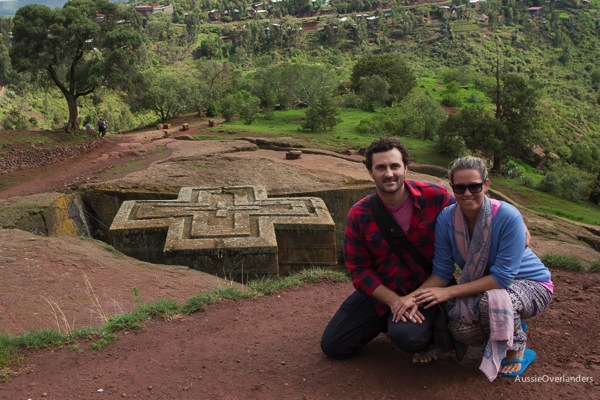
:: Saint George church in Lalibela, Ethiopia
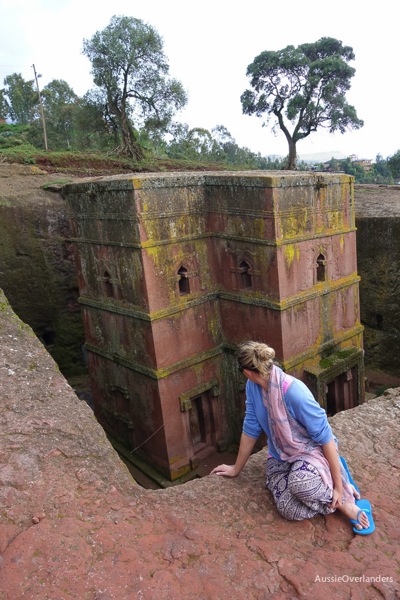
:: The rock-cut churches of Lalibela were carved by hand in 12th century. Our guide told us angels helped King Lalibela create the structures.
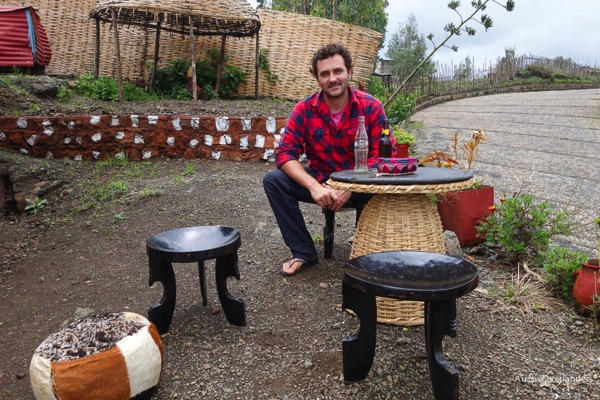
:: The angels also brought us a beer and a stoop to rest our weary legs. God bless them.
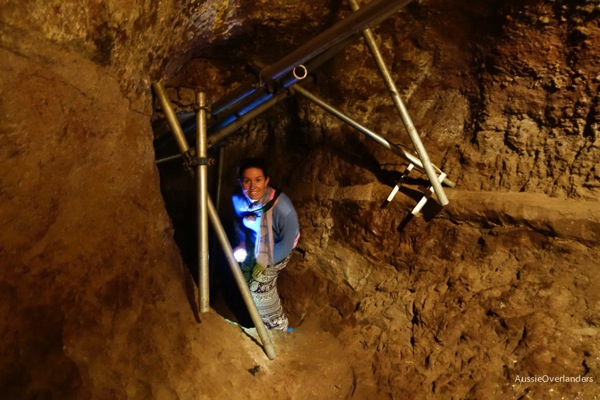
:: Into the Hell Tunnel!
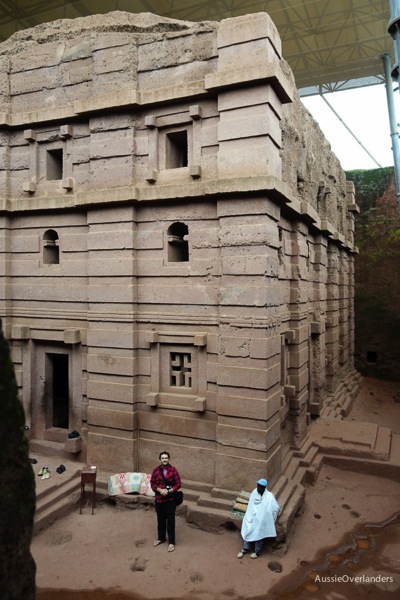
:: Gareth and priest provide some scale to these huge churches. UNESCO has built covers over the top to stop degradation.
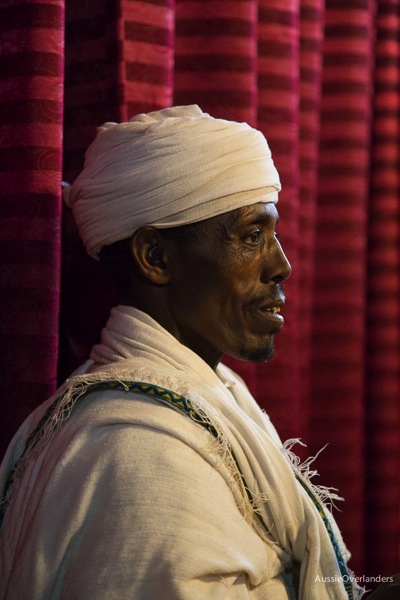
:: The churches are still used daily and surrounded by priests and monks
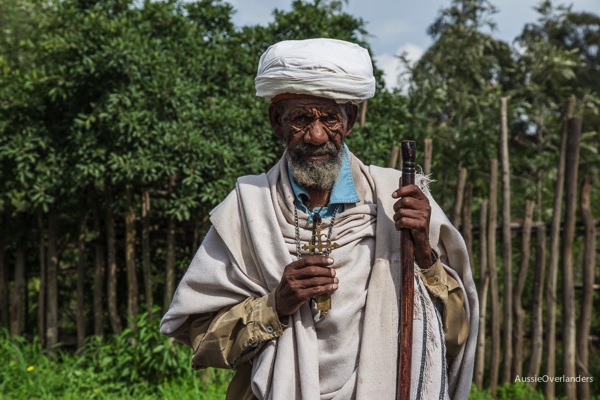
:: If those wrinkles could talk…
Just as we finished seeing the churches the heavens opened up. Rain poured down with fury! So we got to see the drainage systems from the 12th century in action; including inlets to the baptism and fertility pools. We found a nook that was sheltered from the rain and downed our weight in beer; the rain was so heavy it became hilarious. It was like that ice bucket challenge everyone is doing in the western world, but for 5 hours!
The roads the next day were muddy and the villages in the valleys below were heavily flooded. Kids splashed about in their new ocean front homes. We saw animals wading through the same water and a man by the roadside taking a toilet break (#2) upstream of the boys playing. Some of the boys saw G get out of the car and ran up squawking ‘Farange! Brrrrrrrrr’. For a second, Gareth thought he was cold. Note: Farange = White Person, Birr is the local currency. Translation? ‘Yo white person, give me some money!’
An observation. Ethiopia was the first country where we regularly saw people defecating in the street. In terms of development the situation in the country seemed very grim. As we travel through Africa it is so interesting to see the changes in lifestyle and the ways governments operate on limited budgets. Obviously budgets are squandered by fools in governments. But even so, how do you fund a country of 92 million people when the majority don’t pay a cent of tax? It must be so difficult.
The severe lack of education was evident. In the way people went about things and in passing thousands of children doing hard labour. Through all of Africa have not seen so many children working as we did in Ethiopia.
It was also here that I was asked if Gareth and I had children. We are often asked this question. We give them the answer they want ‘Not yet, but definitely next year’ to which they always look relieved. Here in Ethiopia I was told many times to have many children! More the better seemed to be the sentiment. On one occasion Gareth mentioned that he is one of seven children, “Oh wow, well you must make 8!” came the answer.
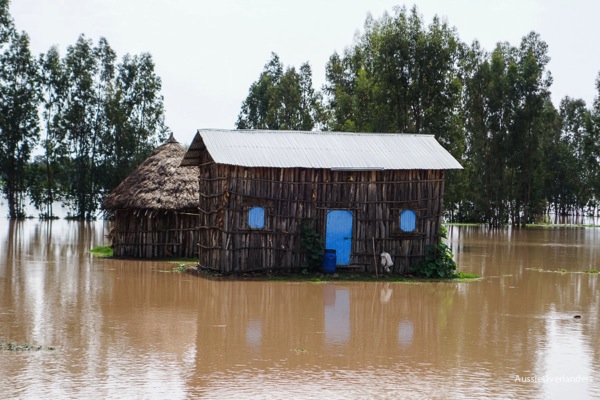
:: Floods in Northern Ethiopia
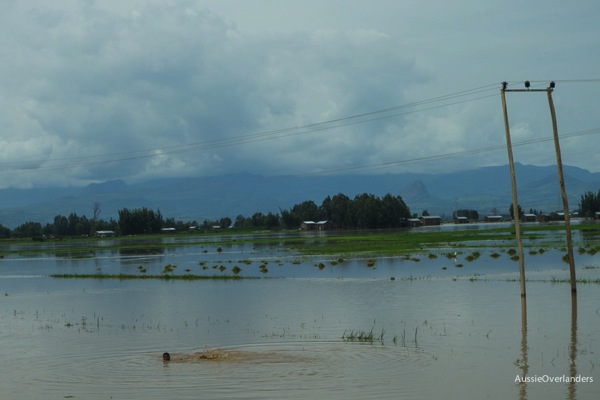
:: Inland beaches
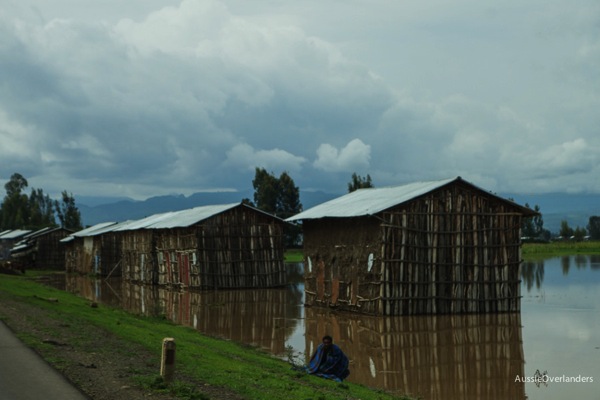
:: One of the men taking a dump upstream of children swimming
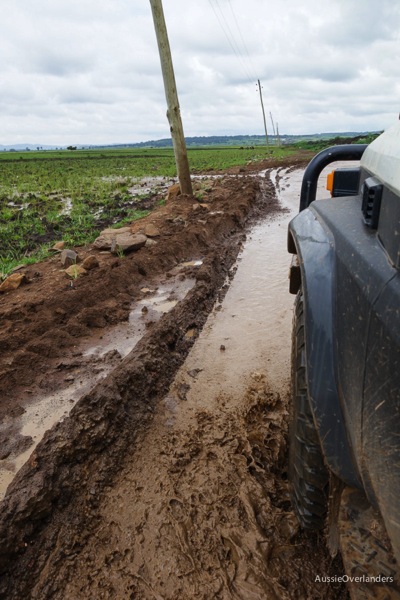
:: Mud pit! GO the BFGoodrich Mud-Terrains!

:: Mud bath!
We had another rainy night in Gondar. A place known as the Camelot of Africa that is home to a royal enclosure of castles and palaces built by a succession of Ethiopian Kings. King Fasil kicked things off in 1632 and then Ethiopia was ruled from these castles for 250 years. Rather than pay for a guide Gareth and I had fun walking by ourselves making up stories about what each building was and who lived where. Yes, they kept lions in that cage! Now let’s proceed to the royal loo…
Our final stop was on Lake Tana, the source of the Blue Nile, where we prepared ourselves for Sudan. Not knowing what was ahead, we wanted to feel prepared and after limited camping in Ethiopia the Troopy was upside down. We did our chores, washed the car with lake water (dust from Northern Kenya is still clinging on) and washed our clothes by hand… the thought of a washing machine doesn’t even pass through our minds anymore. When we popped the roof we discovered some water had snuck in during the downpours – and so some soggy sheets needed to be washed too. In Sudan alcohol is illegal, and so we also took on the arduous task of wiping out our stocks. Unsurprisingly we both volunteered for the job!
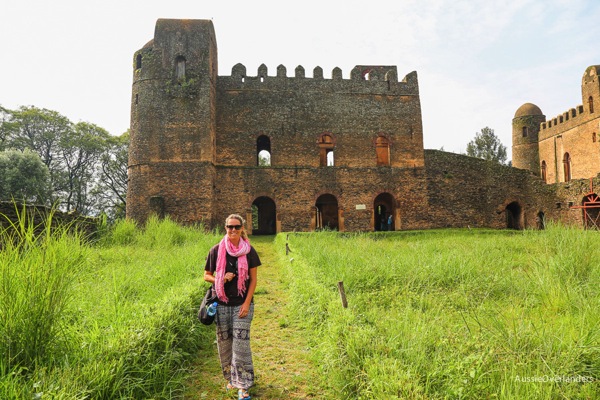
:: Royal enclosure of Gondar where the country was once ruled from

:: We wandered around Gondar and chatted with some locals. Everyone was so nice. And contrary to some word of mouth, we weren’t pestered at all. Actually quite the opposite; people were happy to stop, stare and have a chat. Sounds like Africa to me 😉
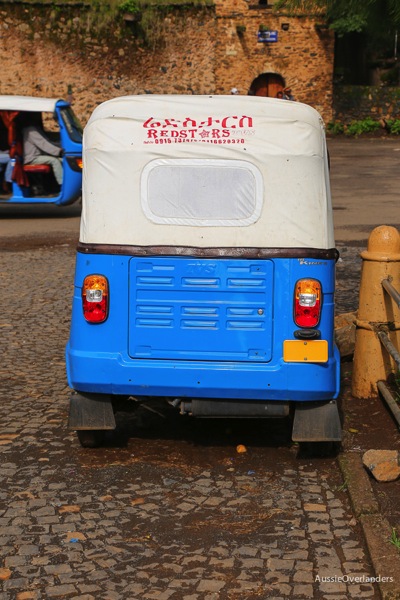
:: Tuk-tuks in Gondar; often seen zooming around donkey carts
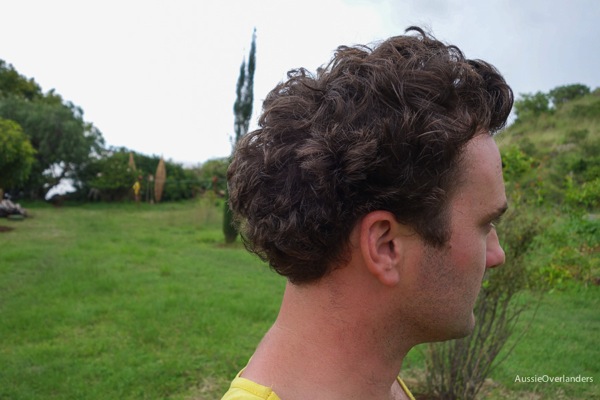
:: This man can grow a good mop! G received a DIY haircut rom me.
Note: Don’t attempt hair cuts when you are ‘wiping out your stocks’
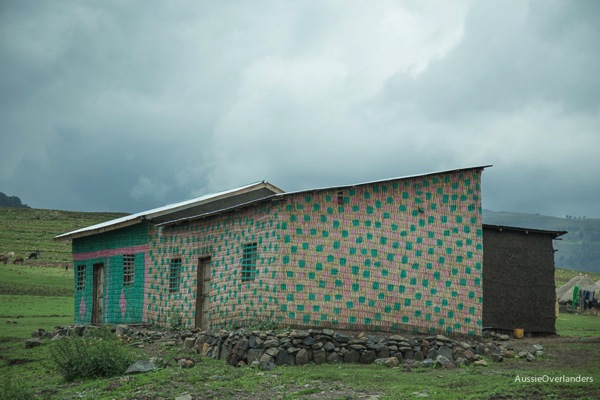
:: Bye, Ethiopia!
![]()
Thanks for dropping by our corner of the web guys. We love being able to share our journey with you.
Next post we drive into the supposed ‘heart of darkness’ that is Sudan.
Cheers,
![]()



Nother interesting entry!!